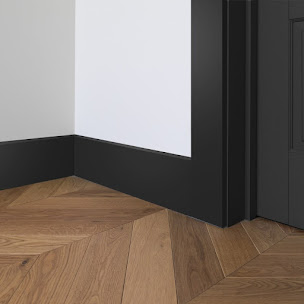Easy Installation Tips for Anti-Slip Grating in High-Traffic Areas
When it comes to industrial, commercial, or public areas where people regularly walk, safety and durable materials are the most important. Areas with a significant amount of moisture, grease, or clutter are the most likely places to encounter slips, trips, and falls. Whether it is non-slip plastic grating, anti-slip GRP grating, or Metal Grating, proper and precise installation maximizes performance and safety while ensuring long-lasting durability.
The environment will help decide what material should be used:
- Lightweight and corrosion resistant, anti-slip GRP grating (glass-reinforced plastic) is perfect for marine, food processing, or chemical environments.
- Industrial areas with heavy machinery will benefit greatly from the use of anti-slip metal grating made from stainless steel, galvanized steel, or aluminum.
- Wet and slippery areas where cost-efficiency is needed will benefit greatly from plastic grating, as it is resistant to corrosion.
- Non-Slip Grating: This term broadly refers to all slip-resistant gratings and is often used in general safety applications.
- It is best to align the type of grating used with the level of traffic and load-bearing requirements of the area.
Prepare the Surface Thoroughly
The effectiveness and durability of anti-slip floor grating depend on the surface being prepared accurately. Here’s how:
- Clean the substrate: The floor must be free from dirt, oil, water, and any loose debris. Level the surface: it should be physically undamaged for wider stability, keeping it from flexing and rocking around the edges.
- Look for any signs of corrosion and structural damage (mainly on metal substrates) and deal with them before moving on.
Measure and Plan the Layout
Mistakes relating to inadequate measurements and layout planning during grating installation are far too frequent. Cuts, additional working hours, and material wastage can all be avoided by
Accurate measuring for the Installation Gaps
- Cutting and waste minimization planning for panel placement.
- All points should have fixed markings to reduce the chance of alignment mistakes.
If using modular systems, like in the case of anti-slip GRP grating, remember to leave room between panels for thermal expansion movement.
Use Proper Fixings and Fasteners
Correct fasteners are chosen based on grating type and substrate. Fastening anti-slip metal Grating will require:
- Strong mechanical fastening using stainless steel clips, U-bolts, or saddle clips.
- Plastic Grating: It is pre-drilled and bolted into either a plastic or metal superstructure.
- Confirm fixings are resistant to corrosion for external or moist environments.
Ensure Careful and Complete Fixing
Loose or ill-fitting panels that rattle are uncomfortable and dangerous. To avoid this:
- Every panel should be fixed at all corners.
- To avoid damaging the plastic as well as GRP Grating, do not apply too much effort when tightening clips.
- Torque wrenches can complement the task of achieving the desired amount of uniform tightness.
Panel Grating Should Be Done Elegantly
Depending on the installation, some panels might need to have certain sections cut out to accommodate columns, drains, or other irregular shapes. Remember the following for accurate cuts:
- When working with plastic or GRP grating, diamond-cut blades are the best option.
- Metal gratings can be made with band saws or angle grinders.
- Proper protective equipment like safety goggles and gloves should be always worn during the cutting process.
- Sharp edges cannot be left after cutting. They need to be filed smoothly to eliminate any sharp burst.
Enhancement
In areas with high traffic, the use of anti-slip nosing’s on stairs and ramps becomes necessary for improved safety.
- Paint and tape that is easily seen can also be put in place to mark the edges, which will drastically reduce the chances of falling while greatly improving visibility.
- Buffer strips or rubber seals: to improve grasping power and withstand collisions.
- These additions may enhance the results and visual cues non-slip grating offers.
Periodic Maintenance Checks After Installation
Post-installation, Anti Slip Grating has little maintenance to do, although performing periodic checks can save a lot of trouble long-term:
- Look for loose clips and check if corrosion is setting in.
- Remove dirt, grease, leaves, etc. that have been allowed to accumulate (which results in unkempt hygiene).
- Immediately replace grating that is broken or shows signs of cracks.
- Grating that is properly maintained lasts longer and is more effective in resisting slipping.




Comments
Post a Comment